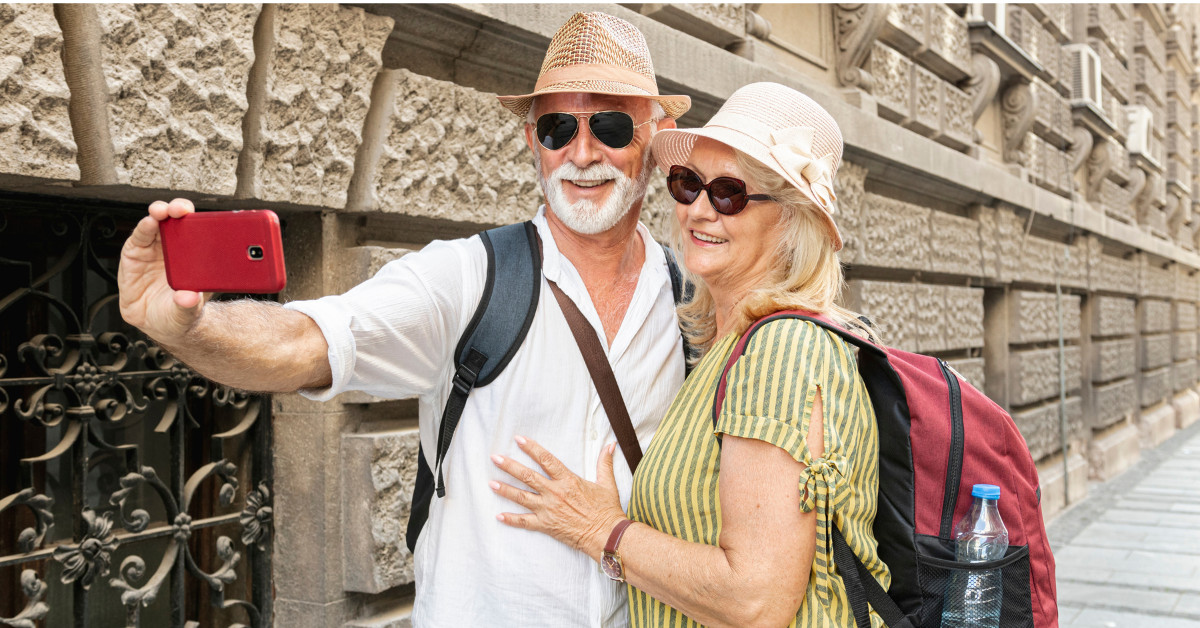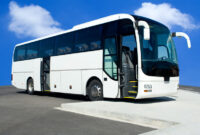Single senior tours offer a unique opportunity for independent travelers to explore the world, connect with like-minded individuals, and create lasting memories. These tours cater specifically to the needs and preferences of older adults traveling solo, addressing concerns about safety, companionship, and ease of travel. Whether seeking adventure, relaxation, or cultural immersion, single senior tours provide a curated experience designed for a fulfilling and enriching journey.
This exploration delves into the specifics of this growing travel niche, examining the target audience, popular tour types and destinations, essential tour features, effective marketing strategies, and crucial safety considerations. We’ll also analyze the competitive landscape and showcase the unique selling points that make certain tour operators stand out. The aim is to provide a comprehensive overview of the single senior tour market, offering valuable insights for both potential travelers and tour operators.
Understanding the Target Audience
Successfully designing and marketing single senior tours requires a deep understanding of the target audience. This involves analyzing their demographics, psychographics, travel motivations, budgetary constraints, and overall expectations. By crafting a clear picture of the ideal customer, tour operators can better tailor their offerings to meet specific needs and desires, ultimately leading to higher satisfaction and repeat bookings.
Single senior travelers represent a diverse group, but certain commonalities emerge when examining their characteristics. Understanding these shared traits allows for more effective targeting and marketing strategies.
Demographics and Psychographics of Single Senior Travelers
The typical single senior traveler is often aged 65 and above, though this range can extend significantly depending on the specific tour and activity level. They are likely to be retired or semi-retired, possessing disposable income and considerable free time. Psychographically, many value independence, intellectual stimulation, and social interaction. They may be adventurous, seeking new experiences and challenges, or prefer a more relaxed pace, prioritizing comfort and convenience. A significant portion are active and health-conscious, seeking opportunities to maintain physical and mental well-being through travel. Others may be looking to connect with like-minded individuals and combat loneliness.
Travel Motivations and Preferences
The motivations for travel among single senior travelers are multifaceted. Many seek relaxation and rejuvenation, escaping the daily routines of life and enjoying periods of peaceful respite. Others are driven by a thirst for cultural immersion, eager to explore new countries, experience different cultures, and broaden their horizons. Adventure travel, encompassing activities like hiking, wildlife safaris, or even more challenging pursuits, also holds appeal for a segment of this demographic. Some prioritize learning and personal growth, seeking opportunities for educational excursions or volunteering abroad. The choice of travel style often reflects these underlying motivations.
Budget Considerations and Expectations for Tour Pricing
Budgetary considerations are a crucial factor for single senior travelers. While many have disposable income, they are often budget-conscious and value for money is paramount. They may compare prices across different tour operators and look for deals or discounts. Expectations regarding pricing vary greatly depending on the level of luxury and the type of activities included. Mid-range tours offering a balance of comfort, cultural experiences, and reasonable prices often prove most popular. Luxury options exist, catering to those with higher budgets, while budget-friendly tours focus on affordability without compromising essential elements of the travel experience.
Persona: Eleanor Vance
To illustrate a typical single senior tour customer, consider Eleanor Vance, a 72-year-old retired teacher from Chicago. Eleanor is widowed and enjoys traveling independently but appreciates the structure and companionship offered by group tours. She is moderately active, preferring comfortable accommodations and manageable activity levels. She has a moderate budget and is interested in cultural tours that offer a blend of sightseeing, local interactions, and opportunities for relaxation. Eleanor values safety, convenience, and the chance to meet new people. She is particularly interested in historical sites and enjoys learning about different cultures through museums and local interactions. She is less interested in extreme adventure activities but appreciates walking tours and opportunities for leisurely exploration.
Marketing and Promotion Strategies
A successful marketing plan is crucial for attracting single senior travelers to our tours. This plan needs to leverage the specific interests and preferences of this demographic, utilizing channels they actively engage with and messaging that resonates with their values and travel aspirations. Effective communication is key to converting interest into bookings.
Marketing Channels for Single Senior Travelers
Reaching single senior travelers requires a multi-pronged approach utilizing various channels. While digital marketing is increasingly important, traditional methods still hold significant value for this demographic.
- Social Media Marketing: Facebook and Instagram, specifically targeting age-based demographics and interest groups related to travel, retirement, and active lifestyles. Visually appealing content showcasing the tour’s highlights, testimonials from past participants, and interactive elements like polls and Q&A sessions can boost engagement.
- Travel Publications and Websites: Advertising in print and online publications catering to the 55+ age group, such as AARP The Magazine, or specialized travel websites focusing on senior-friendly destinations and tours. This offers a targeted approach reaching a pre-qualified audience interested in travel.
- Senior Centers and Retirement Communities: Partnerships with local senior centers and retirement communities provide access to a concentrated audience. This could involve presentations, distributing brochures, or offering exclusive discounts to members. Building relationships with community leaders fosters trust and credibility.
- Email Marketing: Building an email list through website sign-ups and partnerships allows for direct communication of tour details, special offers, and updates. Personalized email campaigns tailored to specific interests increase open and click-through rates.
- Affiliate Marketing: Collaborating with travel bloggers or influencers who cater to the senior travel niche can extend reach and build credibility. Their endorsement and reviews can significantly impact booking decisions.
Comparison of Marketing Approaches and Effectiveness
Different marketing approaches have varying levels of effectiveness depending on the target audience and budget. For example, social media marketing offers broad reach and cost-effective engagement, but requires consistent content creation and community management. Print advertising in travel publications provides a more targeted reach to a specific demographic but can be more expensive. Partnerships with senior centers offer a high-conversion rate but require more time and effort in building relationships. A balanced strategy utilizing a mix of channels typically yields the best results. For instance, a successful campaign might combine targeted Facebook ads with articles in relevant publications and partnerships with local senior centers. This multifaceted approach ensures maximum exposure and resonates with the diverse preferences within the target audience. The effectiveness of each channel can be tracked through analytics and adjusted accordingly. For example, a low click-through rate on a Facebook ad campaign might indicate a need to refine targeting parameters or ad copy.
Competitive Analysis
The single senior travel market is increasingly competitive, with numerous tour operators vying for the attention of this discerning demographic. A thorough competitive analysis is crucial for understanding the strengths and weaknesses of existing players and identifying opportunities for differentiation. This analysis will focus on comparing and contrasting several prominent operators, highlighting their unique selling propositions and marketing approaches.
Comparison of Tour Operators Catering to Single Senior Travelers
Several key players dominate the single senior travel market, each employing different strategies to attract clients. For example, “Globetrotting Seniors” focuses on adventure tours with a strong emphasis on physical activity and cultural immersion, while “Silver Linings Travel” prioritizes relaxation and wellness, offering cruises and spa retreats. “Solo Adventures for Seniors” emphasizes smaller group sizes and personalized itineraries, fostering a sense of community and individual attention. These operators vary significantly in their target market segment within the broader single senior demographic. Globetrotting Seniors targets the more active and adventurous senior, while Silver Linings Travel caters to those seeking a more relaxed and luxurious experience. Solo Adventures for Seniors appeals to those who value personalized service and a strong sense of community among fellow travelers.
Strengths and Weaknesses of Competing Tour Operators
| Tour Operator | Strengths | Weaknesses |
|---|---|---|
| Globetrotting Seniors | Unique adventure itineraries, strong social media presence, active online community. | Potentially excludes less physically active seniors, higher price point. |
| Silver Linings Travel | Focus on relaxation and wellness, luxurious accommodations, established brand reputation. | Limited adventure options, may not appeal to seniors seeking more active itineraries. |
| Solo Adventures for Seniors | Smaller group sizes, personalized itineraries, emphasis on building community. | Higher cost due to personalized service, limited geographical reach. |
Differentiation in the Niche Market
A successful tour operator in this niche market must offer a unique selling proposition that resonates with single senior travelers. For example, “Solo Adventures for Seniors” stands out by focusing on building a strong sense of community amongst its travelers. Their smaller group sizes and personalized itineraries create an environment where participants can easily connect and build lasting friendships. This is a powerful differentiator, as many single seniors seek companionship and social interaction during their travels. Other operators might differentiate through specialized itineraries focusing on specific interests (e.g., history, art, culinary experiences) or through partnerships with local communities to provide authentic and immersive experiences. Effective marketing highlighting these unique aspects is critical to success.
Conclusive Thoughts
Ultimately, the success of single senior tours hinges on understanding and catering to the specific needs and desires of this demographic. By prioritizing safety, providing personalized service, and offering a variety of engaging itineraries, tour operators can create truly unforgettable experiences for solo senior travelers. The market presents a significant opportunity for growth and innovation, focusing on enriching experiences and fostering a sense of community among fellow adventurers.



